La ricerca artistica di Michelangelo Bastiani nasce dal desiderio di creare una relazione tra l’opera e lo spettatore. Il pubblico diviene protagonista di un gioco di illusione ottica in cui percepisce l’immagine video come realistica, tangibile, volumetrica.
L’artista riproduce una dimensione in cui reale e virtuale convivono, fino a crearne una terza. Un microcosmo perennemente in movimento e in comunicazione con l’osservatore. Analogico e digitale si fondono nei suoi ologrammi racchiusi in bottiglie e barattoli trasparenti, nelle video istallazioni e proiezioni interattive posizionate a parete, come sul pavimento.
La percezione visiva è elemento chiave per Bastiani, sia che si parli degli ologrammi che delle installazioni interattive, dove viene a innescarsi una vera e propria simmetria con i movimenti del visitatore.
Quali studi l’hanno portata a questi risultati?
“Mi sono diplomato all’Istituto d’Arte di Firenze, una scuola davvero unica, per poi laurearmi all’Accademia di Belle Arti sempre a Firenze. Ho completato la mia formazione a New York e in California, studiando Computer Art e approfondendo le mie conoscenze sull’animazione tridimensionale. I soggetti che scelgo si ispirano in gran parte ad elementi naturali ma sono creati al computer: è la tecnologia che prova ad avvicinarsi alla natura. In altri casi si tratta di riprese video tradizionali come le figure umane all’interno delle bottiglie.”
I video ologrammi dell’artista toscano prendono ispirazione da idee scientifiche, e in particolare si basano sulla teoria dell’universo olografico del fisico e filosofo americano David Bohm, secondo cui il nostro universo è un gigantesco ologramma molto dettagliato.
Bastiani si confronta con il concetto di “mimesis”, traducendolo in un linguaggio coinvolgente. La bottiglia è il medium di cui si serve per creare un singolare effetto ottico che ci fa vedere l’opera come un unicum. Un processo spiegabile attraverso le leggi della Gestalt, ovvero quelle regole che spiegano l’origine delle percezioni a partire dagli stimoli.
E così, fenomeni atmosferici, danzatrici, acrobati, l’acqua, tema molto caro all’autore, paiono vivere in una bolla che diventa palcoscenico delle opere ma anche loro prigionia.
Tra gli elementi da cui l’artista è maggiormente attratto, la nuvola veste molto bene i suoi ologrammi, collocandosi in una sfera di transito tra terreste e celeste, intrisa di vaghezza, sogno e mistero.
Bastiani riesce a dare forma alla nuvola e custodirla in una terza dimensione. Uno spazio protetto e delimitato geograficamente, considerato alla stregua di un interno urbano, un appartamento, dove può esprimersi in tutte le sue fasi: calma, bianca, vaporosa e soffice, dai sinuosi piccoli movimenti, capace di trasmettere un senso di pace, fino a divenire tempestosa, agitata, in continuo mutamento, nello stato di condensa, in cui appare grigia e tumultuosa, alternando gocce di pioggia e fulmini improvvisi.
Metafora stessa della trasformazione e dell’imprevedibilità della psiche umana e dei suoi tormenti, la nuvola di Bastiani riproduce virtualmente un’entità naturale carica di simbologia e significati nascosti.
Se negli ologrammi l’artista “imprigiona” l’elemento virtuale in un oggetto fisico, nelle video installazioni il punto di contatto tra i due mondi diviene lo stesso spettatore con i suoi movimenti. L’interattività delle cascate d’acqua, ad esempio, porta il pubblico a sentirsi dentro l’opera, parte di essa.
Da dove nasce la voglia di coinvolgere lo spettatore, e di creare opere vive e mutevoli nel tempo?
“L’interazione serve ad avvicinare il grande pubblico ai miei lavori, li richiama a una partecipazione diretta. Non solo i visitatori diventano parte dell’opera, ma senza di loro essa non esisterebbe. Questa reciprocità rompe il muro che divide l’arte contemporanea dalle persone comuni, avvicina il pubblico e allo stesso tempo allontana il critico con gli occhiali rotondi che pretende di spiegarci cosa vedere in un’opera. Qualche giorno fa ci ha lasciati un vero genio dell’arte contemporanea, che diceva: “Io, Christo, faccio e distruggo opere milionarie. Ma non cercate simboli: godetevi il paesaggio”.
Cosa l’ha ispirata a realizzare questo tipo di lavori più scenici, spettacolari?
“Ho lavorato diversi anni come curatore per progetti di scambi culturali tra l’Italia e gli Stati Uniti con importanti istituzioni italiane e americane. L’approccio newyorchese al Contemporaneo, noto per un dialogo più diretto, la voglia di impressionare lo spettatore, l’uso quasi museale degli spazi espositivi (anche i più commerciali), ha sicuramente esercitato una forte ascendenza sul mio stesso modo di concepire l’arte. Il coinvolgimento diretto dello spettatore rende l’opera in continua mutazione, facendole assumere variabili infinite. La relazione tra opera e osservatore si consolida trasformando in attiva quella che immaginiamo come la tradizionale visita “passiva” del pubblico. Penso all’interesse che manifestano per i miei video i bambini e al loro entusiasmo: quale migliore soddisfazione per me?”.
Come immagina le sue opere tra dieci anni?
“Immagino installazioni di grandi dimensioni che includano gli ologrammi, l’interazione con il pubblico e la trasparenza delle mie opere in vetro, magari esposte in uno spazio pubblico adeguato”.
The artistic research of Michelangelo Bastiani begins from the desire to create a relationship between the piece and the audience, who becomes the protagonist of an optical illusion game where it perceives the video image as realistic, palpable, volumetric.
The artist reproduces a dimension where real and virtual coexist, to the point of creating a third dimension. A microcosm perpetually in motion and in communication with the audience. Analogue and digital merge in his holograms, contained into transparent bottles and jars, in the video and interactive installation mounted on a wall, as on the floor.
The visual perception is a key element for Bastiani, both in holograms and interactive installations, where a true symmetry with the movements of the audience sets in.
Which studies led you to these results?
“I got my high-school diploma at the Art Institute of Florence, a unique school, and then I graduated at the Academy of Fine Arts, also in Florence. I completed my education in New York and then and in California, studying Computer Art and deepening my knowledges on three-dimensional animation. The subjects I choose are mostly inspired by natural elements but are computer-created: the technology tries to reach nature. In other cases, I make traditional video captures, like the human figures inside the bottles”.
The video-holograms of the Tuscan artist are inspired by scientific idea, and they are based on the theory of the Holographic Universe by the American physicist and philosopher David Bohm, according to whom our Universe is a very detailed giant hologram.
Bastiani deals with the concept of “mimesis”, translating it into a captivating language. The bottle is the medium he employs to create a unique optical effect that makes us see the piece as a unique event. A process explainable through the laws of Gestalt, that is, those rules explaining the origins of perceptions starting from the stimuli. Thus, atmospheric phenomena, dancers, acrobats, water, a subject very dear to the author, seem to live in a bubble that becomes the stage of the pieces but also their prison.
Among the elements the artist is most attracted to, the cloud perfectly fits in his holograms, placed in a transit sphere between terrestrial and celestial, imbued with vagueness, dream and mystery. Bastiani manages to give shape to the cloud and guard it in a third dimension. A safe space, geographically circumscribed, considered on par with a urban interior, an apartment, where it can express itself in all its phases: calm, white, wispy and soft, with small winding movements, capable of conveying a peaceful sensation, until it becomes stormy, agitated, constantly changing, condensing, appearing gray and tumultuous, alternating raindrops and sudden lightings.
A metaphor for transformation itself, and of the unpredictability of the human psyche and its torments, Bastiani’s cloud virtually reproduces a natural entity charged with hidden symbology and meanings.
If with holograms the artist “captures” the virtual element in a physical object, in the video installations the very same observer becomes the contact point between the two worlds, with his movements. The interactivity of the waterfalls, for example, lead the audience to feel inside the piece, a part of it.
Where does this desire to involve the audience and create living works, changing with time, was born?
“The interaction is necessary to draw the general public to my works; it calls them towards a direct participation. Not only the visitors become part of the work, but without them it would not exist at all. This reciprocity breaks the wall dividing contemporary art and common people, it attracts the audience while keeping away the “round glasses” critic who presumes to explain us what to see in a work of art. Some days ago, a true genius of contemporary art has left us, he used to say: “I, Christo, create and destroy pieces worth millions. Yet do not look for symbols: enjoy the view”.
What inspired you to realize this type of more scenic, spectacular works?
“For many years I have worked as curator for cultural exchanges projects between Italy and the United States with important Italian and American institutions. The New Yorker approach to Contemporary, known for a more straightforward dialogue, the desire to impress the audience, the almost museal use of the expository spaces (even the more commercial ones), have surely left a mark on my own way to conceive art. The direct involvement of the audience creates a continuous mutation in the piece, making it assume infinite variables. The relationship between the piece and the audience consolidates, turning what we imagine as the traditional “passive” visit of the audience into an active visit. I think about how children show interest for my works and their enthusiasm: what greater satisfaction for me?”.
How do you imagine your works in ten years?
“I imagine large installation that include holograms, interaction with the audience and the transparency of my works made of glass, perhaps displayed in an adequate public space”.


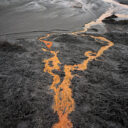
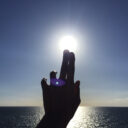

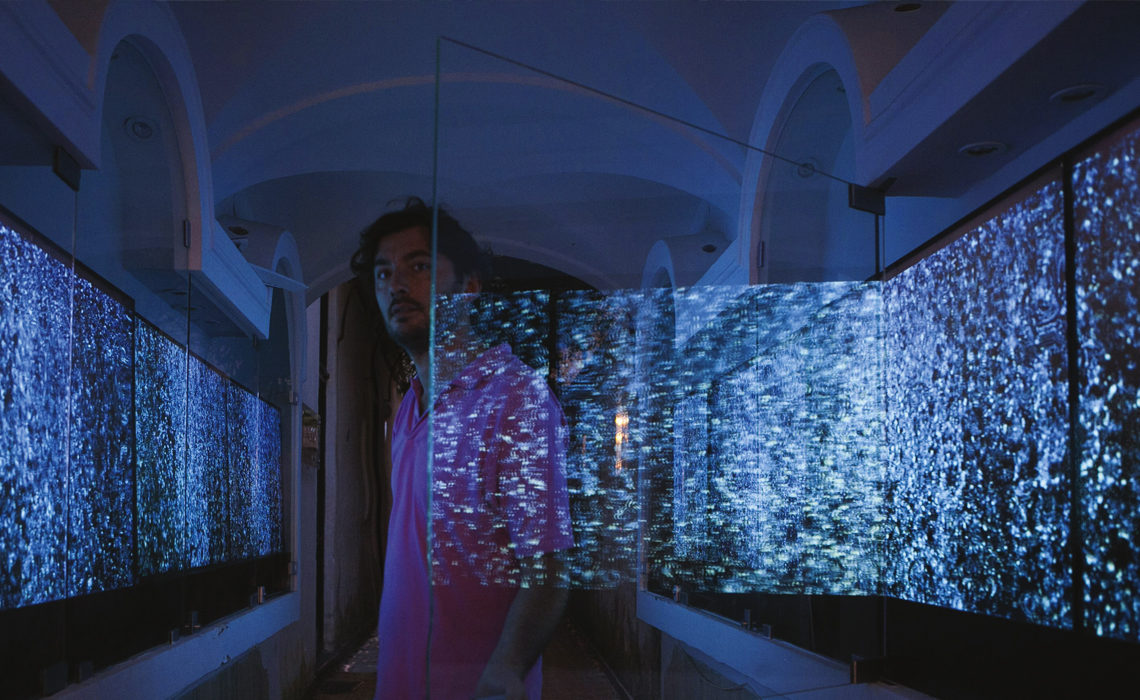
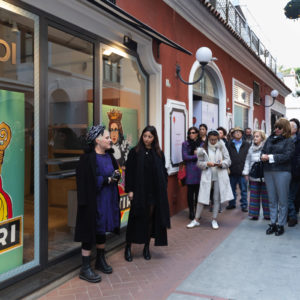
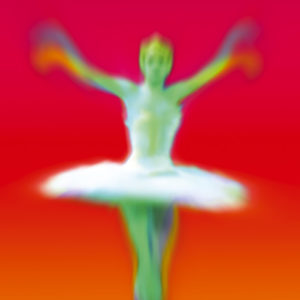
No Comments